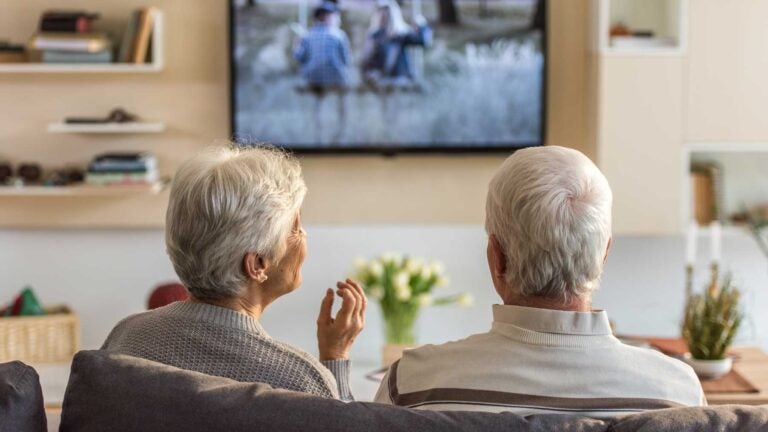
Seniors who experience ageism through TV shows that perpetuate negative stereotypes will be less confident, according to a USC study.
(Photo/iStock)
USC Annenberg-Humana studies suggest relationship between TV age bias and health of seniors
Findings explore the connection between negative portrayals of seniors and their effect on mental and physical health
New research reveals that television’s most highly rated programs feature frequent ageist language and underrepresentation of seniors. The findings were made through an ongoing partnership between health and well-being company Humana Inc. and the Media, Diversity & Social Change Initiative at the USC Annenberg School for Communication and Journalism.
Led by Stacy L. Smith, USC’s study analyzed 1,609 speaking characters in the most popular Nielsen-rated television shows that aired between June 1, 2016 and May 31, 2017 to determine how characters aged 60 and over were portrayed. In tandem, Humana conducted a quantitative survey of people age 60 and over to explore their thoughts on aging, specifically to understand which attributes are directly linked to better health.
Both studies examined ageism, and the results indicate that it potentially has a negative impact not only on optimism, self-esteem and confidence, but also the physical and mental health of aging Americans.
The research also finds that among seniors who experience frequent ageism, optimists have far fewer unhealthy days, regardless of the amount of ageism they experience. This suggests that one way to combat the negative impact of ageism is to be more optimistic.
A deeper analysis of the findings revealed:
Even in the highest-rated television programs, aging characters are underrepresented and stereotypically portrayed.
-
- Only 9.4 percent of all speaking characters were 60 years of age or over — despite seniors representing 19.9 percent of the U.S. population, according to the 2015 U.S. Census.
- Stereotypical, ageist language is prevalent in the shows. Some choice quotes include: “Things just sound creepier when you’re old” and “You like the color? It’s called ‘ancient ivory,’ like you.”
- Of shows featuring a main senior character, 41 percent contained one or more ageist comments. Of those series with ageist comments, 62.5 percent had remarks that came from characters speaking to a senior, while 68.8 percent contained self-deprecating dialogue delivered by seniors to themselves.
- Shows without a writer or showrunner age 60 or over were more likely to feature ageism than shows with a writer or showrunner age 60 or over.
There are inherent consequences to these stereotyped portrayals of aging Americans — including a potentially negative impact on seniors’ sense of self-esteem, confidence and optimism, as well as health.
-
- Seniors who experience ageism once a week or more report having 4.6 more physically unhealthy days and 5.4 more mentally unhealthy days per month than respondents who rarely or never report experiencing ageism.
- Seniors who experience ageism once a week or more reported that it had a moderately negative impact on their sense of self-esteem, confidence and optimism, scoring the impact of ageism on their self-esteem at nearly 6 on a 10-point scale.
Aging Americans who describe themselves as optimists feel better about their overall health and well-being, underscoring the importance of an optimistic mindset for healthy aging.
-
- Among seniors who report experiencing frequent ageism (once a week or more), optimists have, on average, four fewer physical and three fewer mental unhealthy days each month.
- And, of all survey respondents, those who rate themselves as most optimistic feel on average 12.5 years younger than their actual age.
“We’ve studied this in film, but the lack of senior representation and prevalence of ageism on the small screen counters the idea that TV is better than film,” said Smith, director of the Media, Diversity & Social Change Initiative. “There’s obviously more work to be done in the entertainment industry — seniors are often left out of the conversation on inclusion. This study speaks to the need for increasing older storytellers behind the camera who can create more authentic senior characters on-screen.”
